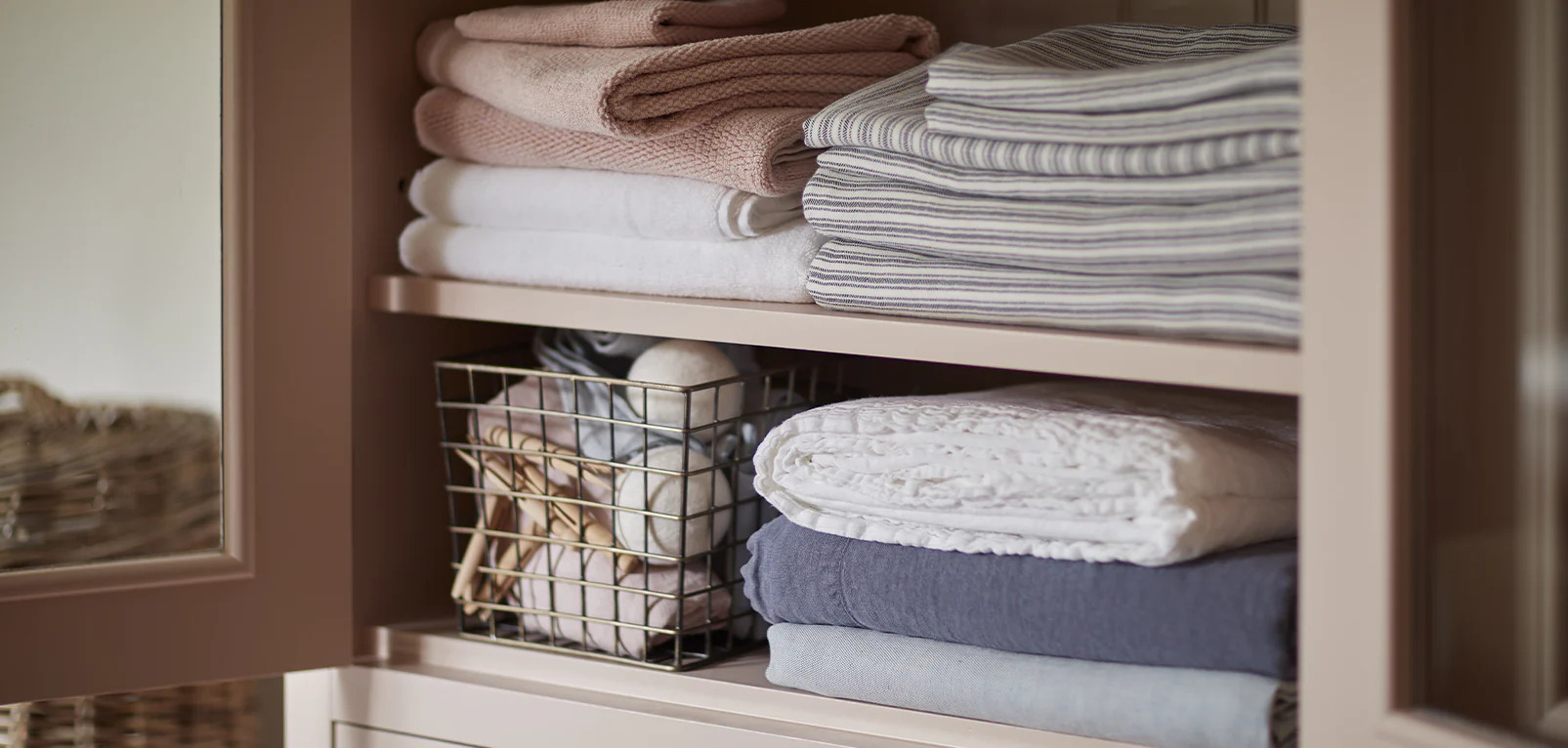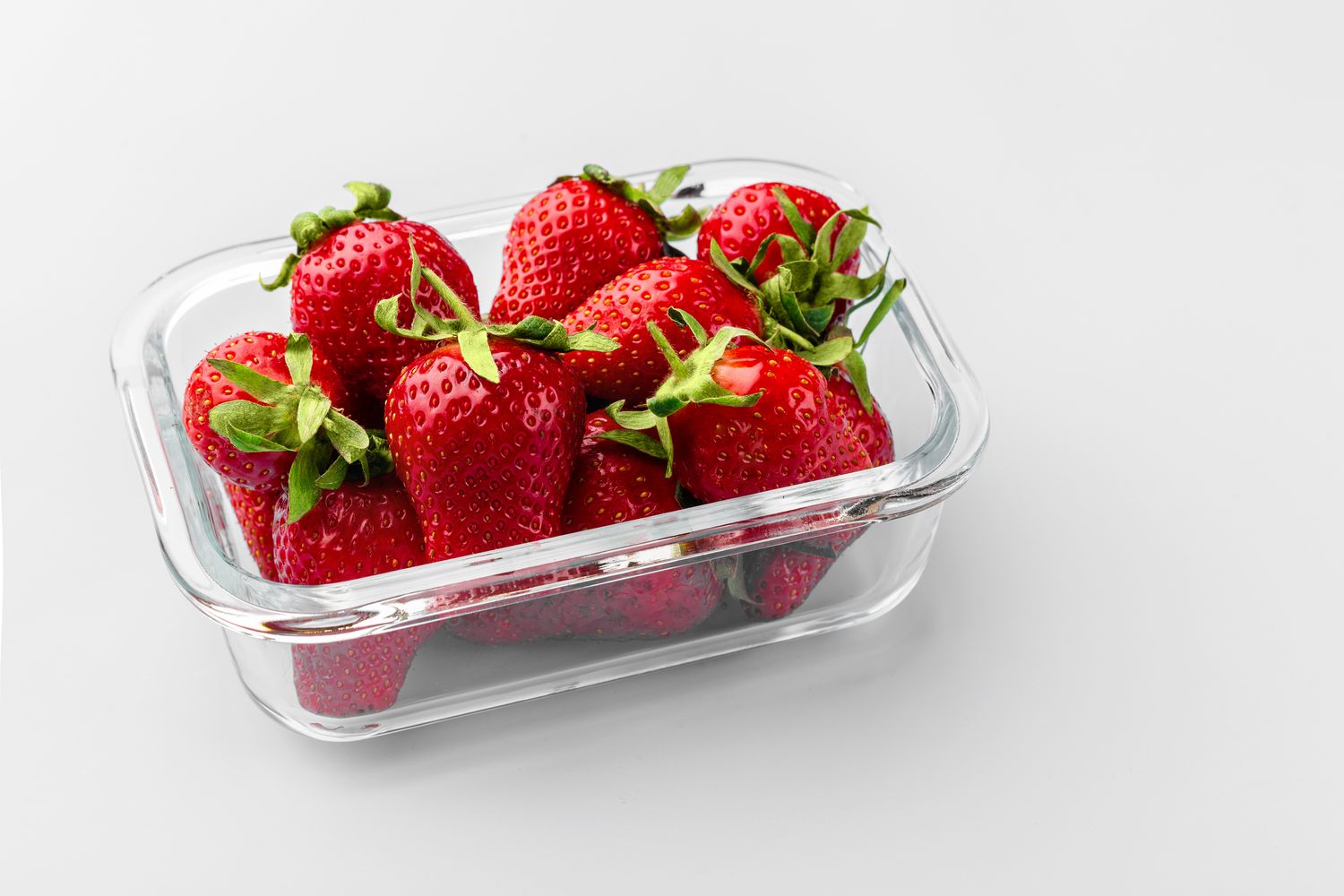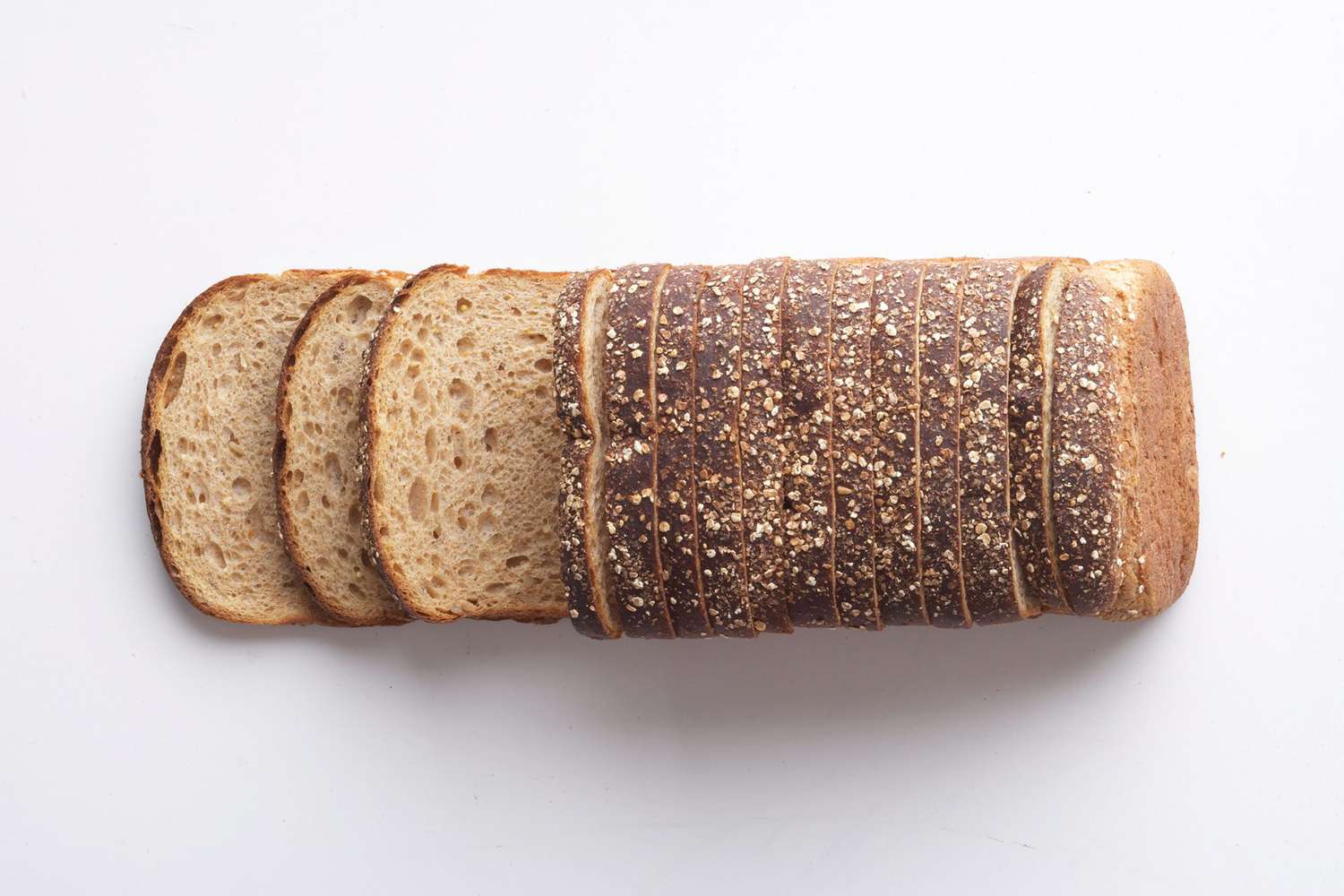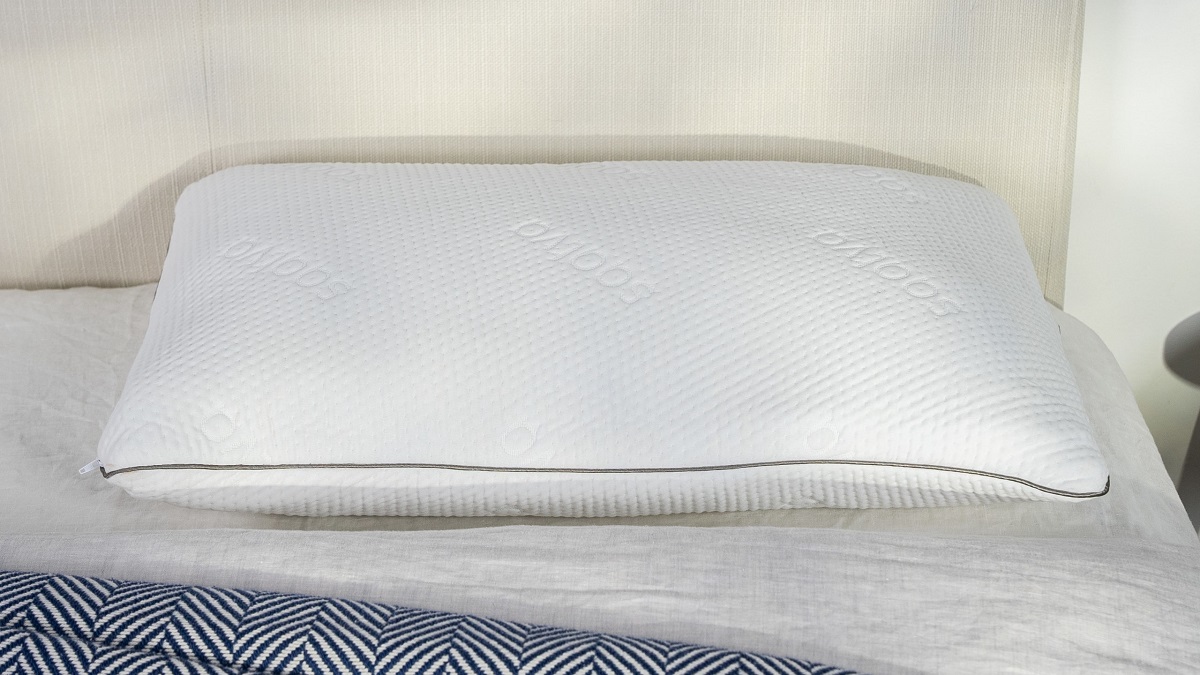

Articles
How To Store Sheets To Keep Them Fresh
Modified: February 24, 2024
Learn how to properly store your sheets to keep them fresh and extend their lifespan. Read our articles for helpful tips and tricks.
(Many of the links in this article redirect to a specific reviewed product. Your purchase of these products through affiliate links helps to generate commission for Storables.com, at no extra cost. Learn more)
Introduction
When it comes to keeping your sheets fresh and in top condition, proper storage is key. Whether you have luxurious Egyptian cotton sheets, silky satin sheets, or cozy flannel sheets, taking the time to store them correctly can extend their lifespan and ensure their freshness for years to come. Proper sheet storage not only helps to maintain their softness and smoothness but also prevents damage and discoloration. In this article, we will explore the importance of storing sheets correctly and provide you with practical tips to keep your sheets fresh and cozy for a long time.
Key Takeaways:
- Properly storing sheets is crucial for maintaining freshness, softness, and quality. Follow tips like cleaning before storage, using pillowcases, and avoiding sunlight exposure to ensure your sheets remain cozy and comfortable for years.
- Regularly rotating and properly folding sheets, choosing the right storage area, and protecting against moisture and dust are essential for preserving sheet quality. By implementing these tips, you can enjoy fresh, luxurious sheets for a long time.
Read more: How To Store Bagels To Keep Them Fresh
Importance of Proper Sheet Storage
The way you store your sheets can have a significant impact on their overall quality and lifespan. Proper sheet storage is important for several reasons:
- Prolongs the lifespan: By storing your sheets correctly, you can prevent unnecessary wear and tear, helping them last longer.
- Maintains freshness: Properly stored sheets remain fresh and clean, ready to be used whenever you need them.
- Preserves softness: The right storage method helps to preserve the softness and smooth texture of your sheets, ensuring maximum comfort.
- Prevents damage: Incorrect storage can lead to creases, wrinkles, and even tearing, causing damage to your sheets.
- Protects against discoloration: Exposure to sunlight or improper storage can cause color fading or discoloration of your sheets.
By implementing proper sheet storage techniques, you can maintain the pristine quality of your sheets, ensuring a cozy and refreshing sleep experience every night.
Tips for Storing Sheets to Keep Them Fresh
To ensure that your sheets stay fresh and in excellent condition, follow these helpful tips for storing them:
- Clean Sheets before Storage: Before putting your sheets away, make sure they are clean. Washing them removes any dirt, sweat, or stains, preventing them from setting in and keeping your sheets fresh.
- Fold Sheets Properly: Proper folding prevents creasing and reduces the chances of wrinkling. Start by matching the corners of the sheet and folding it lengthwise, then fold it in half and repeat until it forms a neat square or rectangle.
- Use Pillowcases or Fabric Bags: Place folded sheets inside pillowcases or fabric bags to protect them from dust, moisture, and potential damage. This also keeps all the components of a set together for easy retrieval.
- Avoid Overpacking: Avoid stuffing too many sheets in one storage container as it can lead to wrinkling and compression, affecting the overall quality of the sheets. Allow them some room to breathe.
- Choose the Right Storage Area: Select a clean, dry, and well-ventilated area for storing your sheets. Avoid damp or humid places as they can promote mold and mildew growth, causing damage to your sheets.
- Protect from Moisture and Dust: Use moisture absorbent packets or silica gel packs to absorb excess moisture and prevent the growth of mold and mildew. Additionally, use a storage container with a lid or cover to protect your sheets from dust and pests.
- Store Sheets in a Cool and Dry Place: Heat and humidity can cause damage to your sheets. Find a cool, dry spot away from direct sunlight to store them. Avoid areas like attics, basements, or areas with fluctuating temperatures.
- Rotate Sheets Regularly: To prevent one set of sheets from being unused for extended periods, rotate your sheets every few weeks or months. This helps distribute the wear and tear evenly and ensures that all your sheets remain fresh.
- Avoid Sunlight Exposure: Direct sunlight can fade colors and weaken fabric fibers. Store your sheets away from windows or use light-blocking curtains or blinds to protect them from excessive exposure.
By following these tips, you can maintain the freshness, softness, and quality of your sheets, ensuring a comfortable and restful night’s sleep every time you use them.
Clean Sheets before Storage
Before you pack your sheets away for storage, it’s important to ensure that they are clean. Even if they appear to be clean, it’s a good practice to wash them before storing to remove any hidden dirt, stains, or sweat that may have accumulated.
Washing your sheets before storage helps to prevent any residue from setting in and potentially causing permanent stains or odors. It also ensures that your sheets are fresh and ready to use the next time you take them out.
To properly clean your sheets, follow these steps:
- Check the care label: Before washing, always check the care label on your sheets to see if there are any specific instructions or recommendations.
- Sort your sheets: Separate your sheets based on color and fabric type. Wash white sheets separately from colored sheets to prevent color bleeding. If you have different fabric types, such as cotton and satin, it’s best to wash them separately as well.
- Choose the right detergent: Opt for a gentle, non-abrasive detergent suitable for your sheets’ fabric. Avoid using bleach or harsh chemicals as they can damage the fabric.
- Set the washing machine: Use a gentle cycle with cool or warm water to prevent shrinkage or damage. If you have delicate sheets, consider using a mesh laundry bag to protect them during the wash.
- Dry the sheets properly: After washing, tumble dry your sheets on a low heat setting or hang them out to air dry. Avoid high heat as it can cause damage or shrinkage to the fabric.
- Iron or steam if necessary: If your sheets are wrinkled, you can iron them on a low heat setting or use a steamer to remove any creases before folding and storing them.
By cleaning your sheets thoroughly before storage, you can ensure that they remain fresh, clean, and free from any odors when you’re ready to use them again.
Fold Sheets Properly
Properly folding your sheets is essential for preventing creasing, minimizing wrinkles, and optimizing storage space. When done correctly, folded sheets are easier to store and retrieve, and they maintain their smoothness and neat appearance.
Follow these steps to fold your sheets properly:
- Start with a clean, flat surface: Clear a large, flat surface such as a table or bed to provide enough room for folding.
- Match the corners: Hold the sheet with the longer sides facing you. Match the top-right corner to the bottom-right corner, ensuring the edges align perfectly.
- Create a rectangle: Fold the sheet in half lengthwise by bringing the matched corners towards you and aligning the edges. Smooth out any wrinkles or creases.
- Fold again: Fold the sheet in half lengthwise once more, bringing the folded edge towards you and aligning the corners and edges. You should have a long, narrow rectangle shape.
- Create smaller rectangles: Fold the long rectangle crosswise into thirds or quarters, depending on the size of your sheets. This will give you a smaller, more manageable rectangle or square shape.
- Repeat for the fitted sheet: If you have a fitted sheet, fold it by folding the corners inward to create a rectangle shape. Then, fold it in half or thirds to match the size of your folded flat sheet.
Once you have folded your sheets, consider securing them with a ribbon or elastic band to keep them neatly folded. Additionally, you can place the folded sheets inside a pillowcase or fabric bag to keep them protected and organized.
Remember, proper folding helps to reduce wrinkles and creases, making it easier to store your sheets and ensuring that they remain in excellent condition until you’re ready to use them again.
Read more: How To Store Grapes To Keep Them Fresh
Use Pillowcases or Fabric Bags
Using pillowcases or fabric bags to store your folded sheets is an excellent way to protect them from dust, moisture, and potential damage. Not only does this keep your sheets organized, but it also ensures that all components of a set are kept together for easy retrieval.
Here’s how you can utilize pillowcases or fabric bags for sheet storage:
- Pillowcases: Place each folded sheet set inside a matching pillowcase. Slide the folded sheets into the pillowcase and fold over the open end to secure them. This keeps the sheets neatly contained and shields them from dust and dirt. You can even store multiple sets of sheets in separate pillowcases for better organization.
- Fabric Bags: If you prefer an alternative to pillowcases, fabric bags can also be used. These can be specifically designed storage bags or resealable fabric pouches. Fabric bags provide an extra layer of protection against dust, moisture, and potential pests. Simply place the folded sheets inside the fabric bag and securely close it to keep your sheets fresh and safe.
Using pillowcases or fabric bags not only offers protection but also makes it easier to identify and retrieve specific sheet sets when needed. Additionally, it helps to prevent tangling or mixing up of sheets, ensuring that you can quickly access the set you desire without creating any unnecessary fuss.
Remember to label or mark the pillowcases or fabric bags for easy identification, especially if you have multiple sheet sets stored together. This way, you can effortlessly locate the sheets you want without having to open every pillowcase or bag.
By utilizing pillowcases or fabric bags, you can keep your sheets fresh, organized, and well-protected, ready to use whenever you need them.
Avoid Overpacking
When it comes to storing your sheets, it’s important to avoid overpacking your storage containers or bags. Overpacking can lead to unnecessary wrinkles, creasing, and compression of the sheets, compromising their freshness and quality.
Here are a few tips to help you avoid overpacking:
- Choose the appropriate container: Select storage containers or bags that are spacious enough to accommodate your folded sheets without excessive compression. Make sure there is enough room for air circulation to keep the sheets fresh.
- Allow room to breathe: Avoid stuffing too many sheets into one container. Allow the sheets some breathing space to prevent excessive wrinkling and maintain their smoothness.
- Consider the sheet fabric: Consider the type of fabric your sheets are made of. Delicate and easily creased fabrics, like satin or silk, may require extra care and less compression. Opt for larger storage containers for these sheets to minimize damage.
- Don’t stack heavy items on top: Avoid placing heavy items on top of your stored sheets. This can cause unnecessary pressure and potential damage to the fabric. Keep your sheet storage area separate from other heavy items.
- Utilize multiple containers: If you have a large collection of sheets, it’s best to use multiple containers to distribute the sheets evenly. This prevents excessive stacking and overcrowding, making it easier to access specific sets without disturbing the others.
By avoiding overpacking, you ensure that your sheets have enough space to maintain their shape and quality. This helps to reduce wrinkles, creasing, and damage, allowing your sheets to stay fresh and in optimal condition until you need them.
Store sheets in a cool, dry place away from direct sunlight to keep them fresh. Avoid storing them in plastic bags, as this can trap moisture and lead to mildew. Instead, opt for breathable cotton storage bags.
Choose the Right Storage Area
Selecting the right storage area for your sheets is crucial in maintaining their freshness and quality. The storage location should be clean, dry, and free from potential hazards that could damage the fabric.
Consider the following factors when choosing a storage area for your sheets:
- Cleanliness: Ensure that the storage area is clean and free from dust, dirt, and debris. Cleaning the storage area before placing your sheets inside will help prevent them from accumulating unwanted particles.
- Dryness: Moisture is one of the main culprits for damaging sheets. Choose a storage area that is dry and free from any moisture sources, such as leaks or excessive humidity. Moisture can lead to mold, mildew, and fabric discoloration.
- Avoid potential hazards: Keep your sheets away from potential hazards such as pests, pets, or chemicals. Store them in a location where they are protected from any substances that could stain, tear, or otherwise damage the fabric.
- Temperature control: Extreme temperatures can also harm your sheets. Avoid storing them in areas prone to significant temperature fluctuations, such as attics or basements. Opt for a storage area that remains relatively consistent in temperature.
- Air circulation: Proper air circulation is essential for maintaining sheet freshness. Avoid storing your sheets in airtight containers or bags as this can trap moisture and lead to musty odors. Instead, choose a storage area that allows for some airflow.
Some ideal storage areas for sheets include linen closets, under-bed storage containers, or dedicated storage shelves. These areas typically provide the necessary conditions to keep your sheets fresh and protected.
Remember to periodically clean and inspect the storage area to ensure it remains suitable for your sheets. Regular maintenance will help preserve the quality and longevity of your stored sheets.
By choosing the right storage area, you can create an environment that safeguards your sheets, keeping them fresh, clean, and ready to use whenever you need them.
Protect from Moisture and Dust
Moisture and dust are two common enemies that can damage your sheets if they are not properly protected. Taking measures to shield your sheets from these elements will help maintain their freshness and extend their lifespan.
Here are some effective ways to protect your sheets from moisture and dust:
- Use moisture-absorbent packets: Place moisture-absorbent packets or silica gel packs in your storage containers or bags to absorb excess moisture. These packets effectively prevent mold, mildew, and musty odors from developing.
- Wrap in plastic or garment covers: For added protection, you can wrap your folded sheets in plastic or use garment covers. This creates an extra barrier against moisture and dust, ensuring your sheets remain clean and fresh.
- Choose storage containers with lids: Opt for storage containers with lids or covers that provide a tight seal. This helps to safeguard your sheets from dust, dirt, and potential pests.
- Regularly clean the storage area: Keep the storage area clean and dust-free by periodically wiping down surfaces and vacuuming the space. This reduces the likelihood of dust settling on your stored sheets.
- Avoid storing near damp areas: Be cautious when selecting a storage area, as moisture-prone environments can lead to mold and mildew growth. Avoid storing your sheets near damp areas such as laundry rooms or bathrooms.
- Consider using storage bags with dust-resistant properties: Look for storage bags specifically designed to resist dust or those made from materials like canvas, which offer better dust protection than a regular plastic bag.
By implementing these measures, you can ensure that your sheets remain clean, fresh, and protected from both moisture and dust. This way, when you take them out of storage, they will be ready for use without any unwanted odors or particles.
Read more: How To Store Apples To Keep Them Fresh
Store Sheets in a Cool and Dry Place
Properly storing your sheets in a cool and dry place is crucial for preserving their quality and freshness. Extreme temperatures and high humidity can cause damage to the fabric, leading to mold, mildew, and fabric deterioration. Choosing the right storage location plays a significant role in maintaining the condition of your sheets.
Follow these tips for storing your sheets in a cool and dry place:
- Avoid heat and sunlight exposure: Direct sunlight can cause fading and discoloration of your sheets. Choose a storage area away from windows or use light-blocking curtains or blinds to protect them from excessive sunlight exposure. Additionally, avoid storing your sheets near heat sources such as radiators or vents.
- Consider climate-controlled storage: If you live in an area with high humidity or fluctuating temperatures, it’s worth considering storing your sheets in a climate-controlled environment. This can be a specially designed storage unit or a room with temperature and humidity control.
- Prevent dampness: Keep your sheets away from areas that are prone to dampness, such as basements or laundry rooms. Moisture can lead to mold growth and unpleasant smells. Ensure the storage area is well-ventilated to discourage the buildup of humidity.
- Use dehumidifiers and fans: If you live in a humid climate, utilize dehumidifiers or fans to reduce moisture levels in the storage area. This helps to create a drier environment that is more conducive to preserving the freshness of your sheets.
- Check for moisture regularly: Regularly inspect your storage area for any signs of moisture or condensation. If you notice any dampness, take immediate action to address the issue and prevent potential damage to your sheets.
By storing your sheets in a cool and dry place, you can protect them from the damaging effects of heat, sunlight, humidity, and moisture. This ensures that your sheets remain fresh, clean, and in optimal condition for many years to come.
Rotate Sheets Regularly
Rotating your sheets regularly is an excellent practice to ensure that all sets of sheets are being used and maintained properly. By rotating your sheets, you distribute the wear and tear more evenly, preventing one set from being left unused for an extended period.
Here’s why rotating your sheets is beneficial:
- Even usage: Different sheet sets experience varying levels of wear and tear based on frequency of use. By rotating your sheets, you ensure that each set gets equal use, preventing one set from wearing out faster than the others.
- Freshness maintenance: Using all your sheet sets helps to maintain their freshness. Sheets that are left unused for long periods may become stale or develop a musty smell. Regular rotation ensures all your sheets remain fresh and ready for use at any time.
- Texture preservation: Continually using and washing your sheets prevents them from becoming stiff or losing their softness. Regular rotation allows you to maintain the desired texture and comfort of your sheets.
- Preventing damage from storage: When sheets are stored for a long time without being used, they can suffer from creases, wrinkles, or even damage from pests or dust. By rotating and using your sheets, you reduce the chances of these issues occurring during storage.
Implementing a rotation schedule is simple. Here are a few approaches you can take:
- Monthly rotation: Rotate your sheets on a monthly basis, ensuring each set is used and washed at least once every month.
- Seasonal rotation: Rotate your sheets with the change of seasons. This allows you to switch to sheets that are appropriate for the temperature and ensures all sets get regularly used throughout the year.
- Biannual rotation: Rotate your sheets every six months, particularly if you have an extensive collection. This provides adequate time for each set to be used and helps you keep track of their condition.
By incorporating regular rotation into your sheet care routine, you prolong the lifespan of your sheets, maintain their freshness, and evenly distribute the wear and tear, ensuring that you get the most out of each set.
Avoid Sunlight Exposure
Protecting your sheets from direct sunlight exposure is crucial for maintaining their color vibrancy and preventing damage to the fabric. Prolonged exposure to sunlight can cause fading, discoloration, and weakening of the fibers, leading to a shorter lifespan for your sheets.
Here are some tips to help you avoid sunlight exposure:
- Choose the right storage location: When storing your sheets, opt for a place away from windows or any other areas where sunlight can directly reach them. Consider using light-blocking curtains or blinds to keep the room dim and protect your sheets from harmful UV rays.
- Store folded sheets in a dark area: If you’re storing your sheets in a closet or storage container, make sure the area is dark and shielded from sunlight. Ensure that the storage container has a lid or cover to prevent any light from seeping in.
- Avoid line drying in direct sunlight: When drying your sheets outdoors, choose a sunny but shaded spot. Direct sunlight can be intense and cause color fading. Hang your sheets in a shaded area or turn them inside out to minimize sun exposure.
- Use UV protectant products: Some fabric sprays or wash additives have UV protectant properties. Consider using these products when washing your sheets to add an extra layer of protection against sunlight damage.
- Rotate the position of your bed: If your bed is positioned near a window, regularly rotate its position to prevent prolonged exposure of your sheets to direct sunlight. This helps distribute the sunlight evenly across different areas of your bed, reducing the impact on any single set of sheets.
By taking these precautions to avoid sunlight exposure, you can help preserve the color, quality, and durability of your sheets. Your sheets will retain their original freshness and vibrant appearance, ensuring that they continue to provide you with a cozy and comfortable sleep experience.
Conclusion
Properly storing your sheets not only ensures their freshness but also helps to maintain their quality and extend their lifespan. By following these essential tips, you can keep your sheets in excellent condition and enjoy the comfort they provide for years to come.
Start by cleaning your sheets thoroughly before storage to remove any dirt or stains that could set in over time. Then, fold your sheets properly to prevent wrinkles and creases, maximizing storage space and ease of retrieval. Utilize pillowcases or fabric bags to protect your sheets from dust, moisture, and potential damage while keeping them organized.
Avoid overpacking your storage containers or bags, allowing your sheets room to breathe and avoid unnecessary wrinkling. Choose the right storage area, ensuring it is cool, dry, and free from potential hazards that could harm your sheets. Protect your sheets from moisture and dust by using moisture-absorbent packets and storing them in airtight containers or bags.
Additionally, rotate your sheets regularly to distribute wear and maintain freshness. Avoid sunlight exposure as it can cause color fading and damage to the fabric. Consider using UV protectant products and positioning your bed away from direct sunlight.
By implementing these storage tips, you can ensure that your sheets remain fresh, clean, and comfortable for a long time. You’ll be able to enjoy the luxurious feel of your sheets every night, knowing that they are well-cared for and ready to provide you with a restful sleep experience.
So go ahead, store your sheets with care, and indulge in the blissful comfort they bring.
Frequently Asked Questions about How To Store Sheets To Keep Them Fresh
Was this page helpful?
At Storables.com, we guarantee accurate and reliable information. Our content, validated by Expert Board Contributors, is crafted following stringent Editorial Policies. We're committed to providing you with well-researched, expert-backed insights for all your informational needs.














0 thoughts on “How To Store Sheets To Keep Them Fresh”